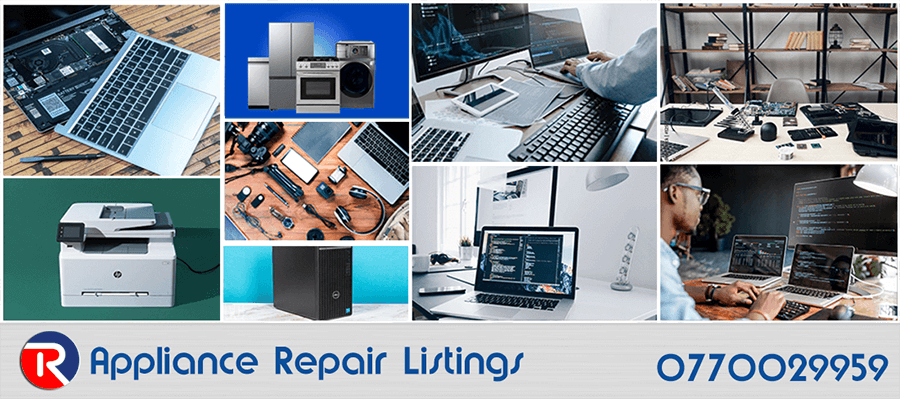
How to Fix a Laptop That’s Not Detecting the Battery
By Repair.co.ke
A laptop that fails to detect its battery can be frustrating, leaving you tethered to a power outlet or unable to use the device on the go. This issue can stem from hardware faults, software glitches, or improper settings. At Repair.co.ke, we’ve seen countless laptops with this problem, and we’re here to guide you through diagnosing and fixing it with practical, step-by-step solutions. Follow these methods to get your laptop recognizing its battery again.
Step 1: Perform a Power Reset
A power reset clears residual charge from the laptop’s components, often resolving detection issues. Start by shutting down your laptop completely. Unplug it from the power adapter and remove the battery if it’s removable. For laptops with non-removable batteries, consult your user manual to locate a pinhole reset button, often found on the underside. Press and hold this button for 10-20 seconds using a paperclip. If no reset button exists, hold the power button for 30 seconds to discharge the system. Reinsert the battery, reconnect the charger, and power on the laptop. Check if the battery is now detected in the system tray or BIOS.
Step 2: Check Battery Connections
Loose or corroded battery connections can prevent detection. For removable batteries, carefully inspect the battery contacts and the laptop’s battery bay. Look for dirt, dust, or corrosion on the metal pins. Clean them gently with a cotton swab dipped in isopropyl alcohol (90% or higher). Ensure the battery is firmly seated when reinserted. For non-removable batteries, this step may require professional assistance, as opening the laptop could void warranties or cause damage if done improperly. If you’re comfortable, follow a model-specific guide to access the battery connector and ensure it’s secure.
Step 3: Update or Reinstall Battery Drivers
Software issues, such as corrupted drivers, can cause the laptop to overlook the battery. On Windows, open Device Manager by right-clicking the Start button and selecting “Device Manager.” Expand the “Batteries” section, where you’ll see entries like “Microsoft AC Adapter” and “Microsoft ACPI-Compliant Control Method Battery.” Right-click each, select “Uninstall device,” and confirm. Restart your laptop; Windows will automatically reinstall these drivers. To update drivers manually, visit your laptop manufacturer’s website, download the latest chipset and battery drivers for your model, and install them. For macOS, reset the System Management Controller (SMC) by following Apple’s official instructions, as this controls battery-related functions.
Step 4: Check BIOS/UEFI Settings
A misconfigured BIOS can interfere with battery detection. Restart your laptop and enter the BIOS/UEFI by pressing the appropriate key (usually F2, DEL, or ESC) during boot-up. Check for a battery health or power management section. Ensure battery-related settings are enabled. If an option exists, reset BIOS settings to default, save changes, and reboot. While in BIOS, note if the battery is detected there. If it’s visible in BIOS but not in the operating system, the issue is likely software-related; otherwise, it points to a hardware problem.
Step 5: Test the Battery and Charger
A faulty battery or charger may be the culprit. If possible, test the battery in another compatible laptop or try a known-working battery in your device. Similarly, use a different charger with the same voltage and connector type. Check the charger cable for fraying or damage. Multimeters can test the charger’s voltage output, but if you lack one, a replacement charger is often a cost-effective diagnostic tool. If the battery is old (2-3 years or more), it may have reached the end of its lifespan and require replacement.
Step 6: Update Your Operating System
Outdated operating systems can cause compatibility issues with battery management. On Windows, go to Settings > Update & Security > Windows Update and install any pending updates. For macOS, check for updates in System Preferences > Software Update. After updating, restart your laptop and verify if the battery is detected.
When to Seek Professional Help
If none of these steps work, the issue may involve a damaged motherboard, a failed battery sensor, or internal wiring problems. At Repair.co.ke, we recommend professional diagnostics for such cases. Attempting complex repairs without expertise risks further damage. Our technicians use specialized tools to test motherboard components and battery circuits, ensuring accurate repairs. If your laptop is under warranty, contact the manufacturer before proceeding with any repairs.
Preventive Tips
To avoid future battery detection issues, always use the original or a manufacturer-approved charger. Avoid letting the battery drain to 0% frequently, as this can shorten its lifespan. Keep your laptop’s vents clean to prevent overheating, which can affect battery performance. Regularly update your system and drivers to maintain compatibility.
By following these steps, most users can resolve battery detection issues at home. If you’re still facing problems, Repair.co.ke is here to help with expert laptop repair services across Kenya. Visit our website or contact us for professional assistance tailored to your device.